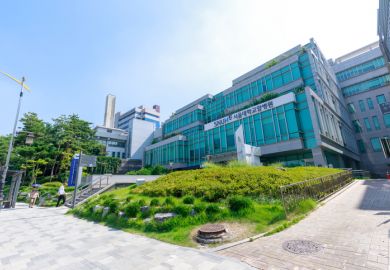Fraud furores in no way lessen stem-cell technology's promise to deliver a magic bullet, Ian Wilmut argues
The subject of stem cells seems to be in the news almost every week these days - usually because someone is reporting progress towards a clinical goal, using stem cells to treat conditions such as Parkinson's disease, diabetes or spinal cord injury. Sadly, a great deal of attention has focused very recently on the claims by Woo Suk Hwang in South Korea of efficient production of cells from cloned human embryos, which turned out to be fake. Great sympathy must be felt for the young women who donated the very large numbers of eggs that were used in this research, particularly as the donations were in some cases apparently made under duress, and for the patients who had false expectations that there would soon be a new and effective treatment for their disease.
The situation is complex, and it is still not clear to me exactly who falsified which set of results. Nevertheless, the critical conclusion is that, at the present time, nobody has derived a stem-cell line from a cloned human embryo. In several laboratories, cloned embryos have reached the stage from which stem cells are derived, but no stem-cell lines have yet been obtained from them. This does not affect the opinion that such cells will be extremely valuable once they are available; rather, it means that we are further from the objective than we thought a few months ago.
As this book notes, this is not the first time that unrepeatable claims have been made about nuclear transfer. Twenty-five years ago, Karl Illmensee presented results that have never been repeated despite a detailed attempt by distinguished researchers. Illmensee claimed to have produced mice by transfer of nuclei from cells taken from the early embryo.
He also claimed to have produced mice with parents of only one sex by transfer of one of the specialised nuclei that are present only briefly after fertilisation. In this case, Illmensee has never admitted fraud, and the confusion may have been the result of record-keeping mistakes.
Fraud has been detected not just in relation to nuclear transfer and stem cells, but also in other areas of science. In another recent case, a cancer researcher at the Radium Hospital in Oslo simply made up the observations he needed to make his case convincing. I find it impossible to understand why people set out to fabricate data, but it seems that research workers are as liable to mistakes or deceit as those in other professions.
There is very little about the author on the jacket of Stem Cell Now or inside the book, but from other sources I know that Christopher Scott has had a distinguished career in business and in university administration. He trained as a molecular biologist, worked in industry, then served as assistant vice-chancellor of the University of California, San Francisco, and also as a senior administrator of Stanford University. As associate director of the Centre for Molecular Medicine, he worked with the Nobel laureate Paul Berg, whose encouragement to write this book he acknowledges.
Scott is now executive director of the Stem Cells and Society project at Stanford's Centre for Biomedical Ethics, although Stem Cell Now must have been completed before the announcement of that programme in the late summer of last year. There, he has direct access to one of the most distinguished research centres concerned with stem-cell biology. He also acknowledges interviews with researchers and ethicists around the world.
Despite the importance of stem cells, public understanding of them is often very limited. Scott sets out in this book to provide information on the nature of the different populations of stem cells, to describe some of the ways in which they may be used, and to help people to make ethical judgments on the basis of this information.
Stem cells have two unusual abilities that make them of great interest in research and therapy. They can divide many times, and during this multiplication they may give rise to more stem cells or to daughter cells that set out along a path of change to form specific tissues. Stem cells have been identified in a great variety of stages of development from the early embryo to many of the tissues of adults, from bone to brain, heart to hair follicle. Embryo stem cells are unique in that they have the ability to form all the tissues of an adult, whereas those derived from adult tissues have limited potential under the current methods of culture.
Methods have been established to isolate many types of stem cell and their culture in the laboratory, although this work is still in its infancy and more work is required to optimise procedures for specific cell populations.
In the near future, as we learn more about the mechanisms that regulate multiplication and change in stem-cell populations, it will be possible for cell culture to become far more accurate and precise. For now, many cells are grown with other cell populations, known as "feeders", that help to provide an appropriate environment in ways that we do not understand.
Typically, the culture will contain serum, often sourced from an animal, again as a means of providing unknown factors for the support of the cells.
Current research emphasises the importance of local factors for the health of stem cells. The concept has emerged of a "niche" in which cells are in intimate contact with neighbouring cells where they can be maintained for long periods if necessary.
The time taken to develop a new cell therapy causes great concern to potential patients. As Scott shows, more than ten years is required to develop and assess new treatments. In the long run, it is essential that new treatments are studied in this way, but this means that some patients will get little benefit from the treatment. Indeed, they may well have died before the tests are completed. Their frustration is increased by the frequent reports of trials of potentially useful treatments in countries with less restrictive regulation. At present, patients with degenerative diseases such as multiple sclerosis can only wait and watch as their condition deteriorates. There would seem to be benefit, and justice, in establishing procedures to allow patients with life-threatening conditions to use experimental procedures if they give informed consent to someone who has no involvement in the project. It may be necessary to establish independent groups specifically to obtain consent in these very difficult circumstances. This would allow British patients to have a treatment if they wished, in the full knowledge that it might harm them rather than do good. I think many would take the risk.
Claims that stem cells from one tissue can form cells of another tissue, known as trans-differentiation, have been contested more strongly than most others in stem-cell biology. Great excitement was created by reports that blood stem cells could form muscle and liver. More recent studies showed that in some cases the cells that had been transferred in these studies had fused to cells of those tissues rather than acquired the characteristics of the other cell type. The situation is still uncertain, but a great deal of research is focused on developing novel systems to achieve such changes. If this becomes possible, it would provide a way of producing cells that are specific to the patient and not subject to immune rejection.
One population of adult stem cells has been in clinical use for many years.
These are the blood stem cells that are usually obtained from bone marrow.
Bone-marrow cells may be taken from the patient and returned later in a treatment strategy. Such "autologous" cells have been used in effective treatment of leukemia for 40 years. Bone-marrow cells are removed before a patient is treated with drugs to destroy both cancerous and healthy cells that remain in the bone marrow. Cancerous cells must also be screened out of the bone-marrow cells that have been stored to prevent the reintroduction of the cancer. Alternatively, the bone-marrow cells may be obtained from a donor, but in this case strategies must be introduced to prevent immune rejection.
Transfer of bone-marrow cells from a donor, or heterologous transfers, may one day offer an effective approach for the use of cells derived from embryo stem cells. Strategies have been developed by Irv Weissman and his colleagues at Stanford by which bone-marrow cells from one mouse can be established in another mouse. Both the introduced cells and the animals'
own stem cells persist. In this situation, tissues from the other mouse may be transplanted into the treated mouse. These results suggest a possible means of preventing rejection of cells derived from embryo stem cells. This would involve derivation of bone-marrow cells and the required cell type from the same embryo stem-cell line. The bone-marrow cells would be established first, before later transfer of the therapeutic cells. This is pure speculation now, but it is one of several approaches being considered for practical use of embryo stem cells.
Although biology is global in nature, ethical opinions are not; and inevitably Scott's account of the social and political aspects of this subject are dominated by events in America. There is, however, a brief description of regulation in other countries, and a full range of ethical opinions is presented.
This excellent book touches on many critical aspects of research towards cell therapy, including the niche, characteristics of stem cells, methods of cell culture, trans-differentiation and nuclear transfer. In a book of this scope, there are inevitably a few mistakes, but it is generally thorough and accurate. Research with stem cells offers one of the most important opportunities to understand and develop new treatments for human disease. Stem Cell Now provides a good introduction to the subject.
Ian Wilmut is director, Centre for Regenerative Medicine, Edinburgh University.
Stem Cell Now: From the Experiment That Shook the World to the New Politics of Life
Author - Christopher Thomas Scott
Publisher - Pi Press
Pages - 243
Price - £17.99
ISBN - 0 13 173798 8
Register to continue
Why register?
- Registration is free and only takes a moment
- Once registered, you can read 3 articles a month
- Sign up for our newsletter
Subscribe
Or subscribe for unlimited access to:
- Unlimited access to news, views, insights & reviews
- Digital editions
- Digital access to THE’s university and college rankings analysis
Already registered or a current subscriber? Login



